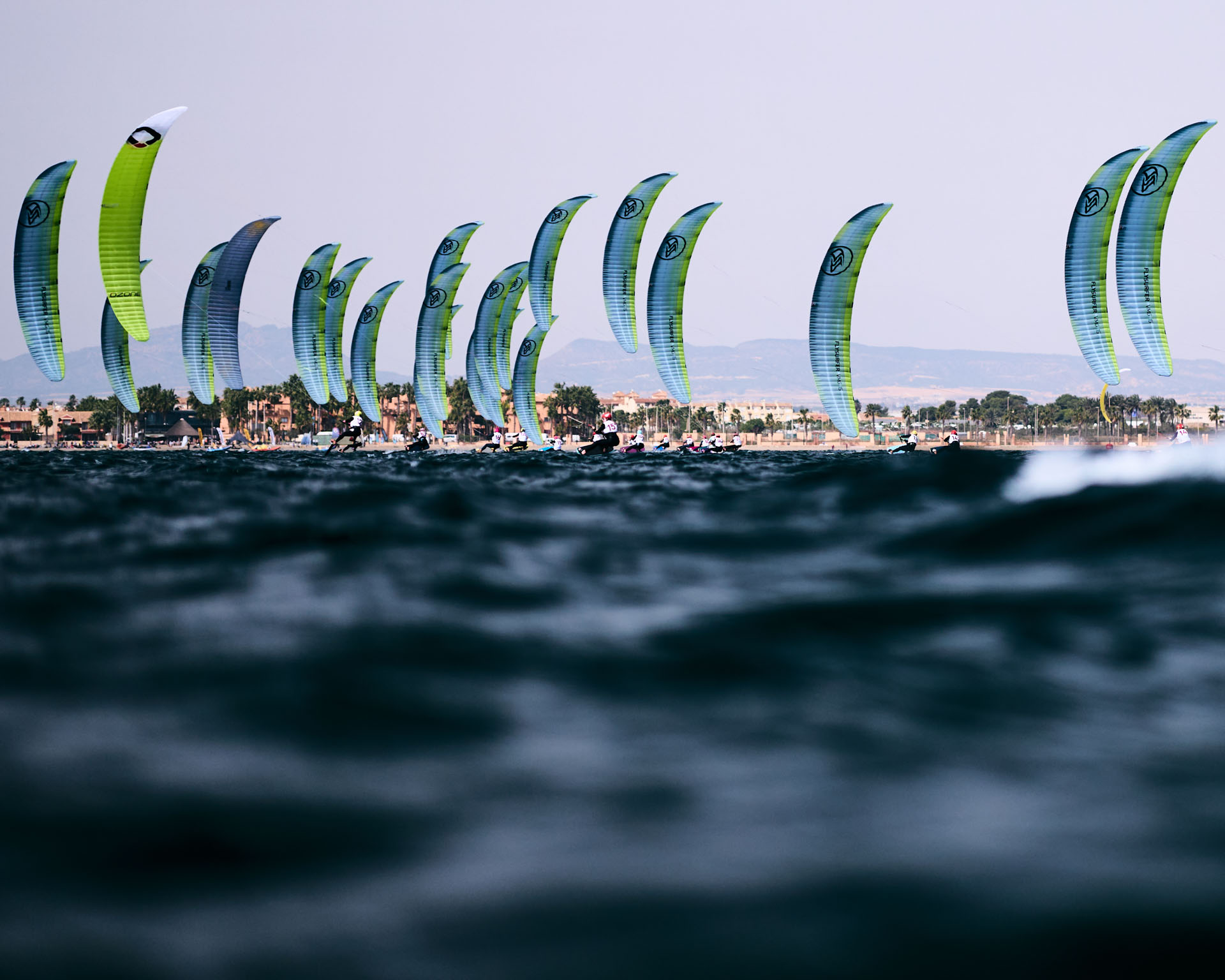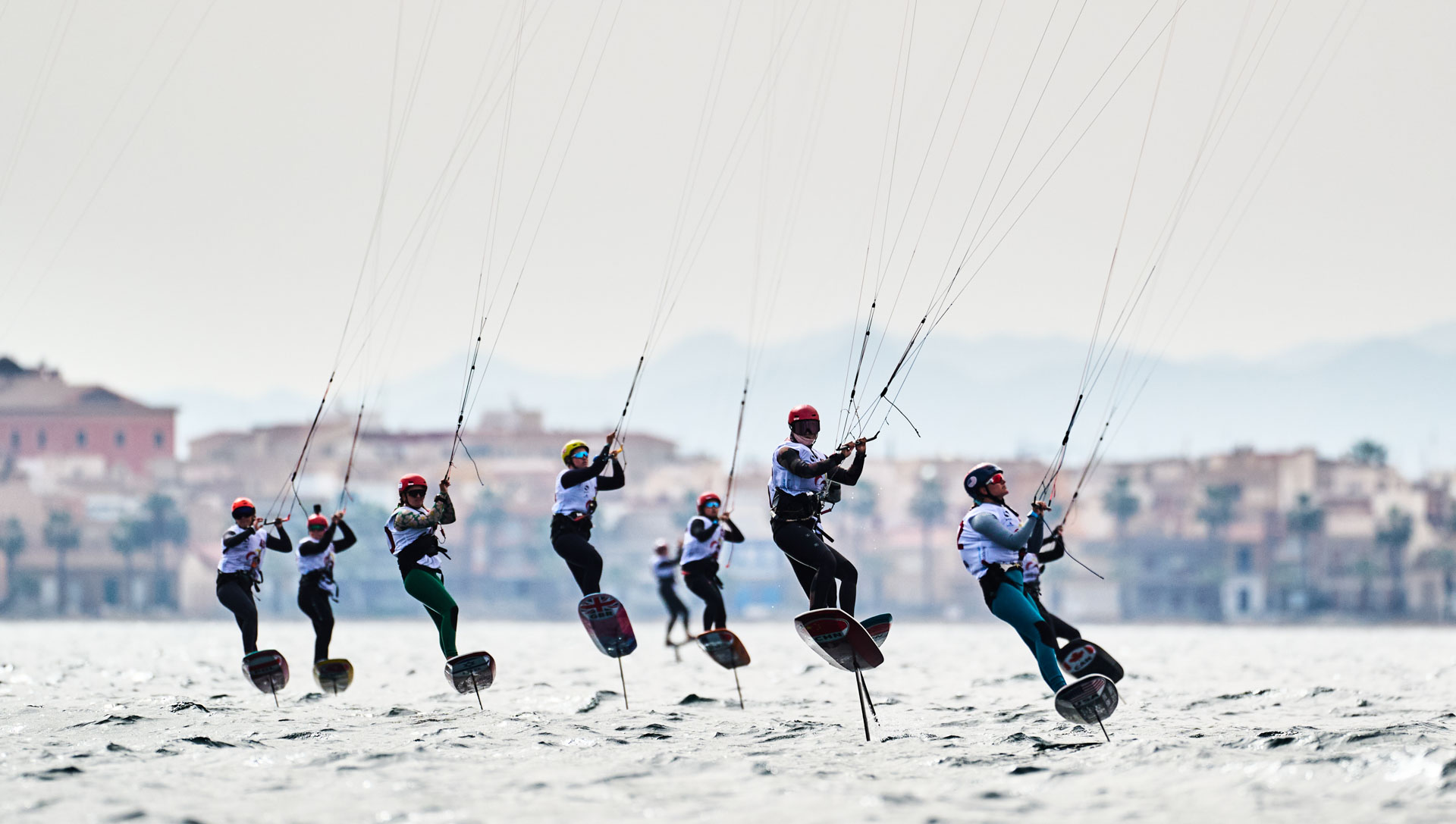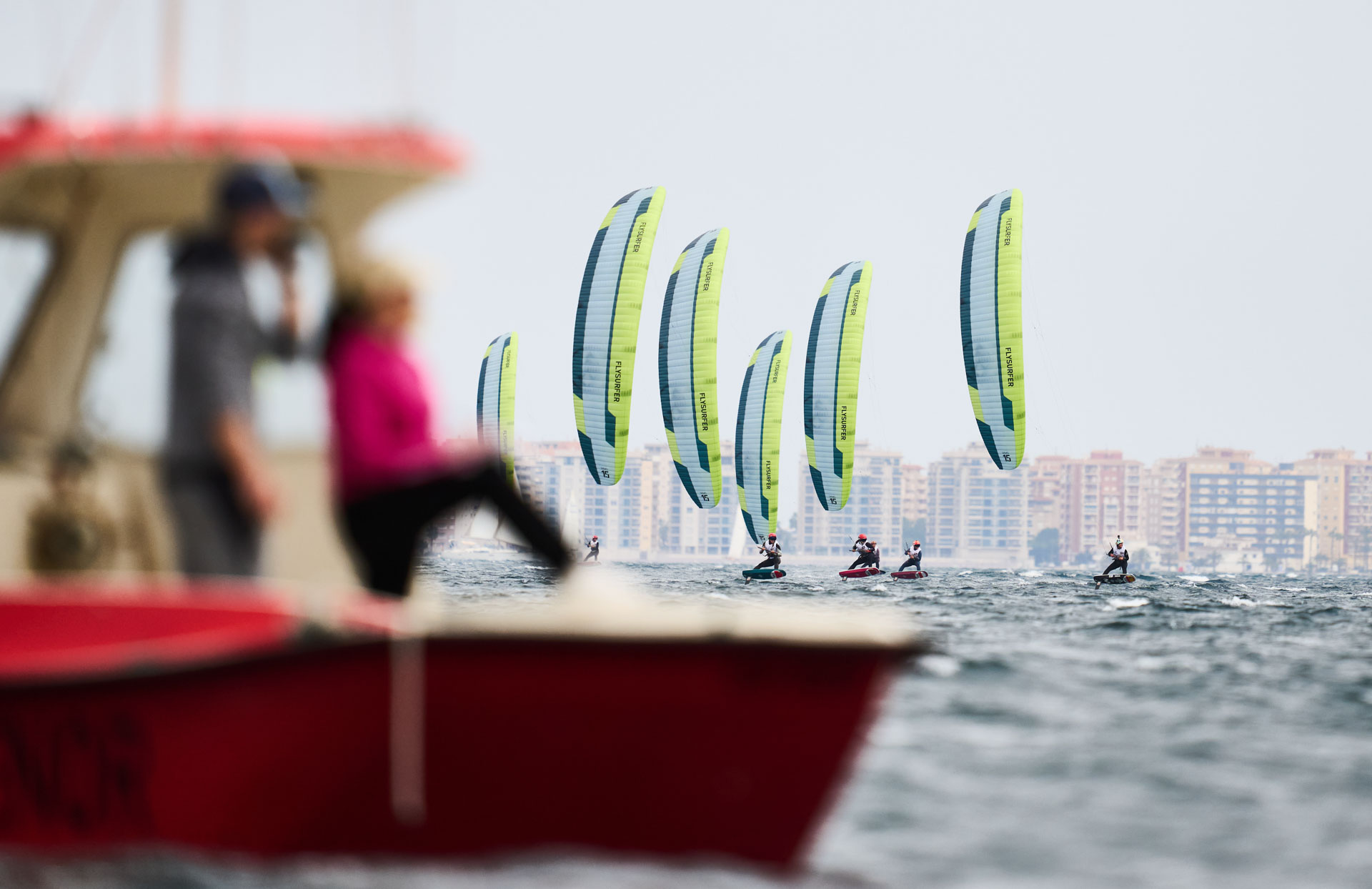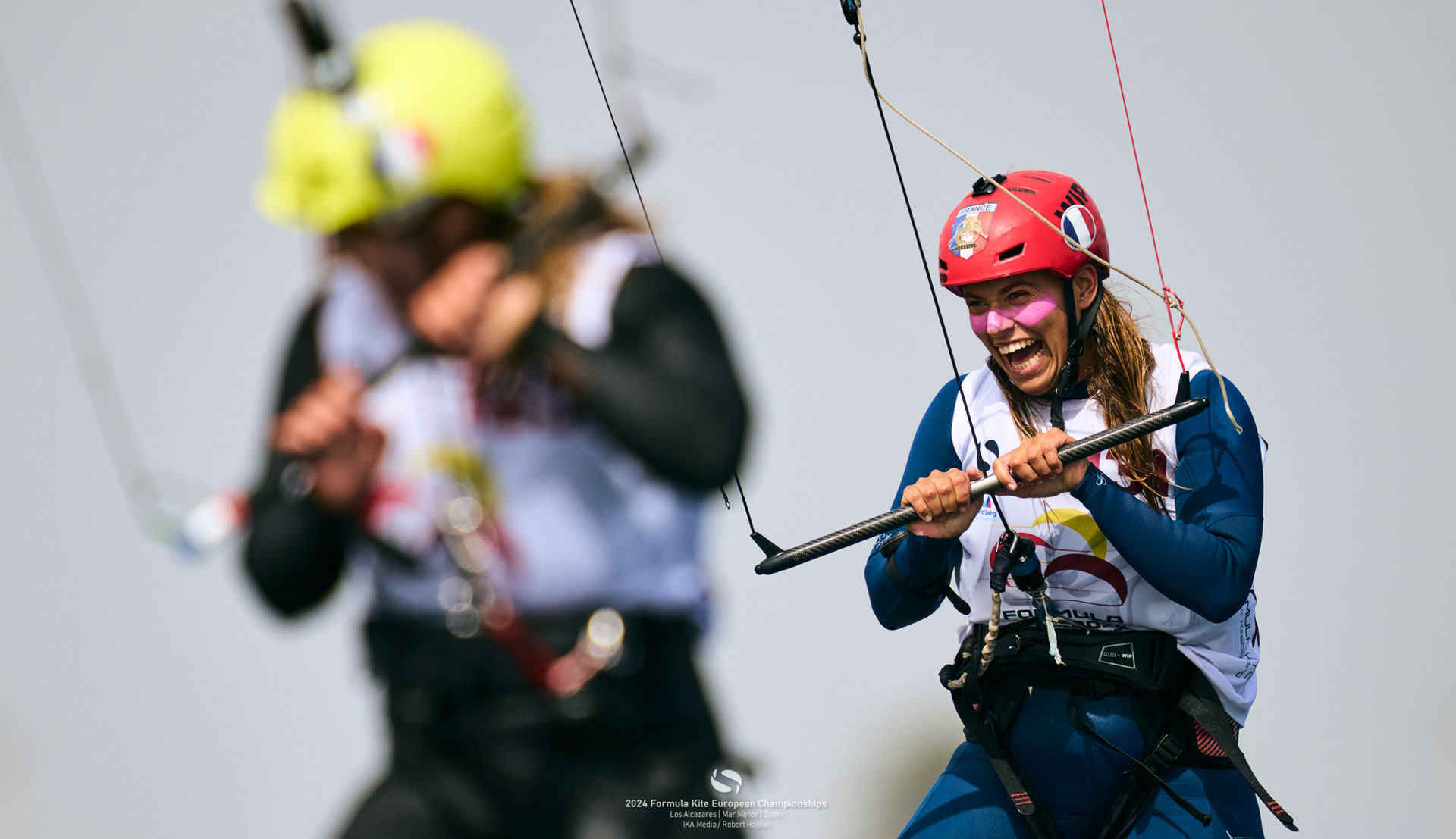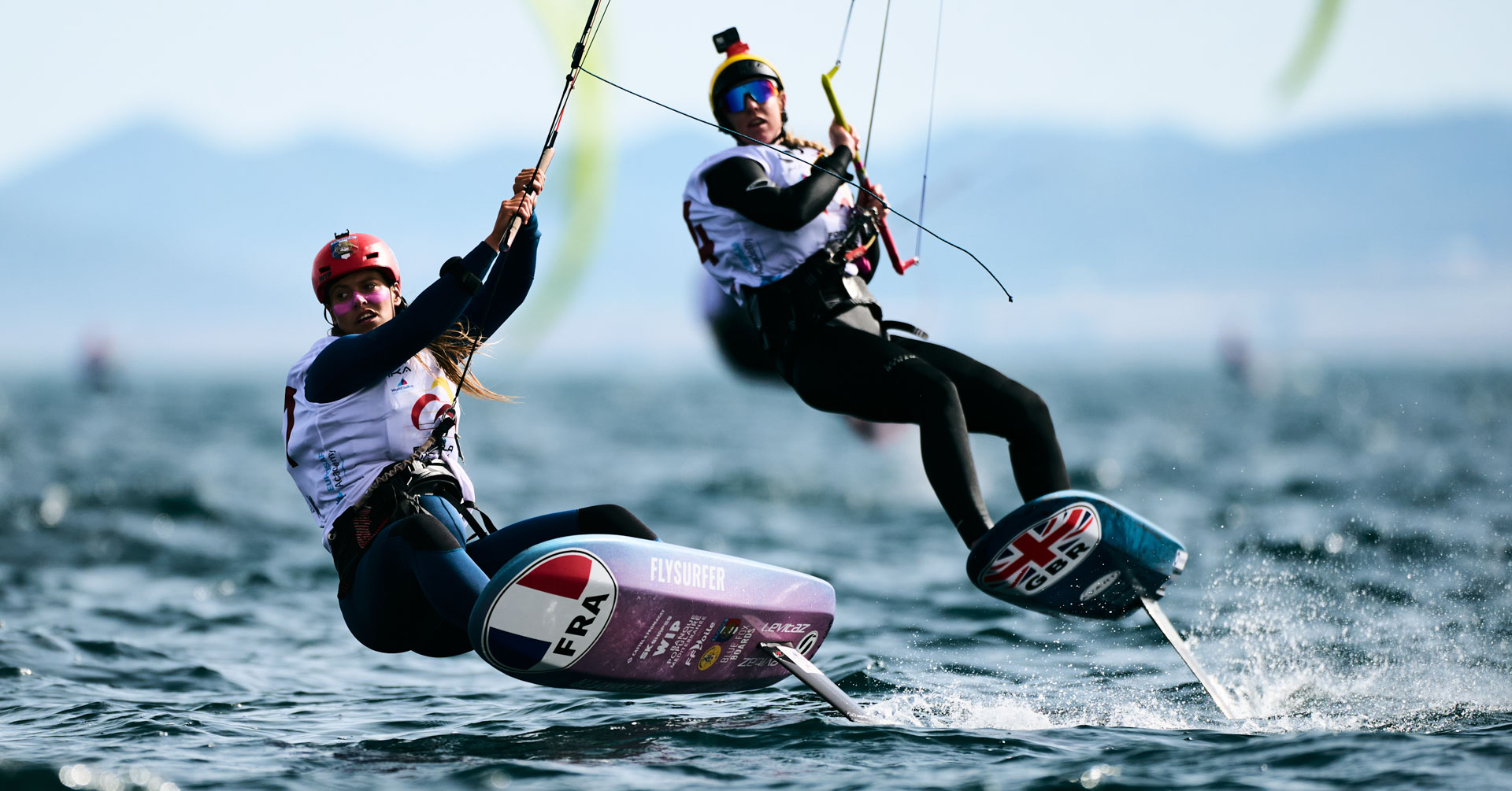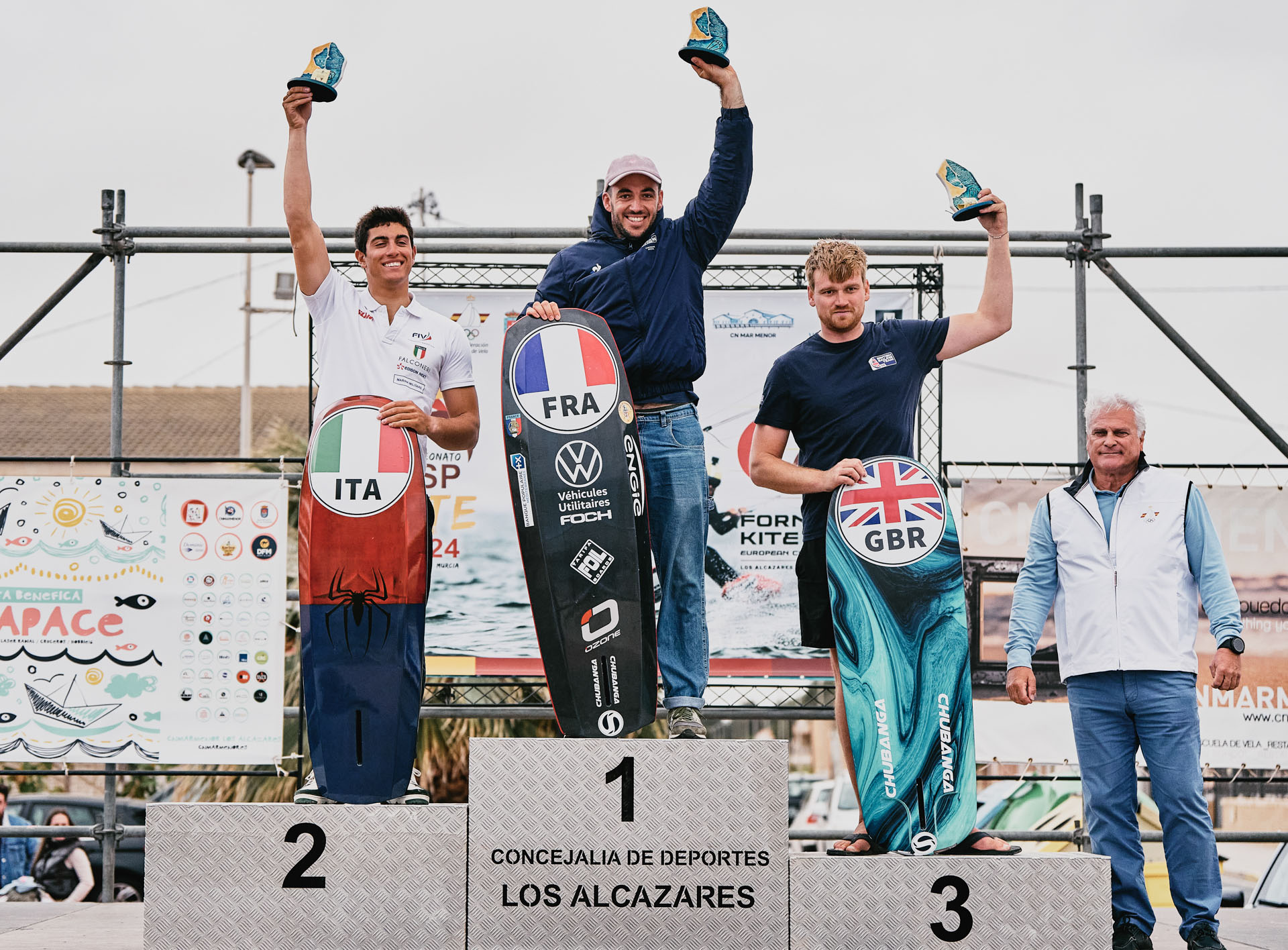Speed, tactics, and nerves of steel – that’s what the athletes had to demonstrate throughout the six-day racing series at the European Championship on Mar Menor in southwestern Spain. With 137 participants from 39 countries, this was not only one of the most International European Championships ever held in kite racing but also marked the beginning of a historic year for kite foil-racing’s world elite. With the Olympics on the horizon, the racing fleet is more motivated than ever to push the boundaries of the sport and fight harder than ever before. And that’s exactly what they did!
The first day presented challenges for the riders. After the wind picked up around noon and the first races of the season could be run at 7-10 knots, a temporary wind shift and a breeze of just 3 knots forced the fleets back to shore. However, the IKA race management patiently waited until conditions stabilized again, allowing for further races.
By the end of the first of the three qualification days, during which all athletes are equally divided into two (women) or three (men) fleets, it was primarily the port starters who secured the first race victories. Riccardo Pianosi (ITA) and Valentin Bontus (AUT) thus positioned themselves at the top of the results table, alongside a solid performance from Poema Newland (FRA) and Gal Zuckerman (ISR) in the women’s division.
As promised by various weather models, the riders woke up to a much more consistent breeze on the second day, enabling five races on the day’s menu after just three races the day before. One athlete particularly demonstrated absolute dominance: 17-year-old reigning world champion from Singapore, Maximilian Maeder, won all races consecutively, laying the groundwork for the overall lead, which he would not relinquish until the very last day.
However, the women also showcased speed and tactical prowess. The French trio Newland, Kampman, and Nolot alternated race wins well ahead of their pursuers, forming the dominant top of the results list. After her over five-month injury break, it was Jessie Kampman who impressed the most.
“I’m super happy to be back on the water after such a long time and to be able to practice the sport I love! I felt like a beginner again in my first rounds. It’s even better that I’ve regained my old speed in such a short time.” – Jessie Kampman
The last day of the qualifying series would now determine who would continue to fight for the top positions in the gold fleet and how well they would position themselves there. The raw points from all twelve qualifying races would be carried over to the two final days. The increasing wind over the week meant that all racers now had to demonstrate their skills on the smallest foil kites of 11 or 9 square meters. With the waveless conditions on the lagoon-like Mar Menor, the sound barrier was thus broken in terms of speed on the third competition day. Speeds of up to 40 knots (~75 km/h) were not uncommon, and the by far fastest Olympic water discipline showed its action-packed best side.
At the end of the day, it was mainly the usual suspects, Maeder and Nolot, who remained on course for gold, but other faces also excelled in the rougher conditions. For example, Elena Langwiler (SUI) and Dor Zarka (ISR) demonstrated with their results that nations that have not yet secured their nation ticket for the Olympics are also to be reckoned with.
With the start of the final series on the last two days, the weather gods once again proved to be friendly. Two full days with a constant east wind breeze between 12 and 18 knots turned the races into an absolute speed battle. Almost tied in points, Axel Mazella (FRA), Riccardo Pianosi (ITA), and Connor Bainbridge (ENG) battled with Maximilian Maeder (SGP) for direct entry into the final of the medal races on Super Sunday. Thrilling lead changes and an error in the scoring system that shuffled the positions of the three pursuers made it exciting until the last second to see who would race the second place. In the end, it was Axel Mazella who secured the second ticket directly to the final.
The three Frenchwomen continued their dominance, sharing the race wins among themselves in seven out of eight races. Especially notable were fast lines on the left course side and subsequently a free turn towards the windward mark. The eighth race win went to the current European Champion Ellie Aldridge (GBR), who, although consistently achieving results in the top 5 with her unique technique, often found herself further back in the field in the first round and thus had to make many comebacks.
“The conditions here are anything but easy. There may be hardly any waves on the racecourse, but a lot of ventilation on the foil makes it incredibly difficult to apply maximum pressure to the foil without crashing.” – Laurianne Nolot, the current World Champion.
Nevertheless, Nolot and Newland proved to be the most consistent and secured direct entry into the final of the medal races with first and second place, respectively.
On Super Sunday, Mar Menor showed its roughest side once again. With gusts over 25 knots and a slightly offshore wind direction, it was all about not making any mistakes and choosing the right lines for all riders in the top 10 under the most difficult conditions and highest speeds. The biggest surprise came as Swiss Langwiler defeated Aldridge in her semifinal and advanced to the final alongside Kampman from the other semifinal. Here, Kampman even won the first race but had to concede defeat in the second round of the finals despite outstanding downwind performance to World Champion Nolot.
In the men’s category, there were two surprises: despite a solid performance, Connor Bainbridge could not surpass the strong reigning European Champion Pianosi and narrowly missed the final. In the other semifinal, Bontus (AUT), Maus (GER), and Lobo (BRA) contested three races, from which Lobo ultimately emerged victorious. In the final, Maeder had to prove his extraordinary performance of 18 out of 20 race wins on the first days. At the start, it initially seemed that Maeder would choose a more conservative approach to avoid an early start, but after just a few seconds, he closed the gap to Mazella. Within just three seconds, all four final racers rounded the windward mark and shot towards the downwind mark at over 38 knots, led by the young exceptional talent. From the leeward mark onwards, Maeder switched to match race mode, always turning exactly on Mazella’s line and managed to not give the winner of last year’s test event any opportunities. With his characteristic winner’s move: the clenched fist, Maeder not only crossed the finish line but also secured another Formula Kite Men’s European Open Trophy title followed by Axel Mazella (Silver) and Riccardo Pianosi (Bronze).
“For me, it’s incredibly exciting to compete against the strongest racers in the world under such difficult conditions and to give my best. But above all, I had an incredible amount of fun doing it!” – Max Maeder
With these great words, the freshly crowned event-winner bids farewell for a week until the Princess Sofia Trophy on Mallorca starts the next World Cup on March 29th.
![]() written by Jannis Maus
written by Jannis Maus![]() photos by IKA International Kiteboarding Association / Robert Hajduk
photos by IKA International Kiteboarding Association / Robert Hajduk
The FLYSURFER Team congratulates all riders on a phenomenal race 
Max Maeder
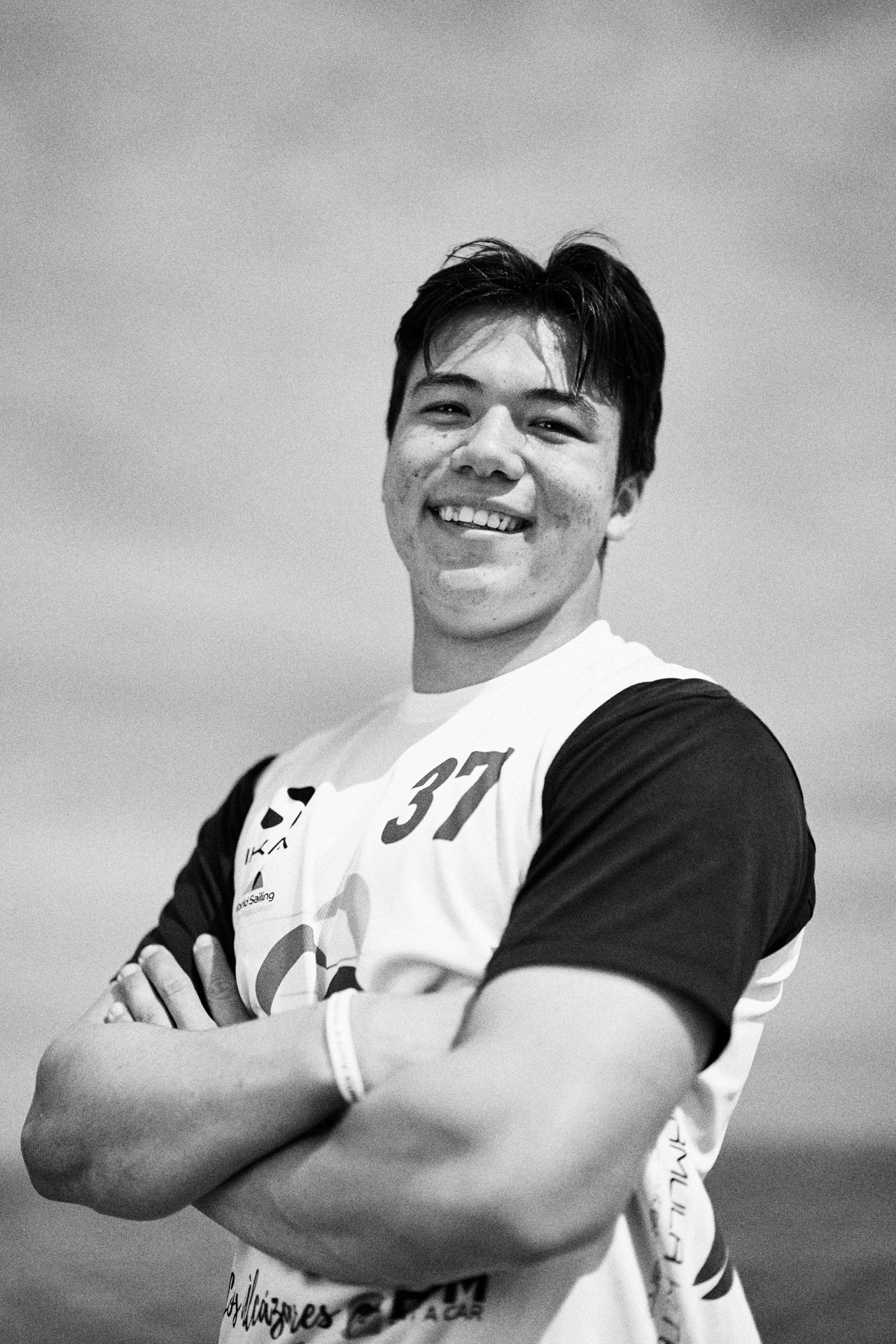
Riccardo Pianosi

Jessie Kampan

Laurianne Nolot

Poema Newland






